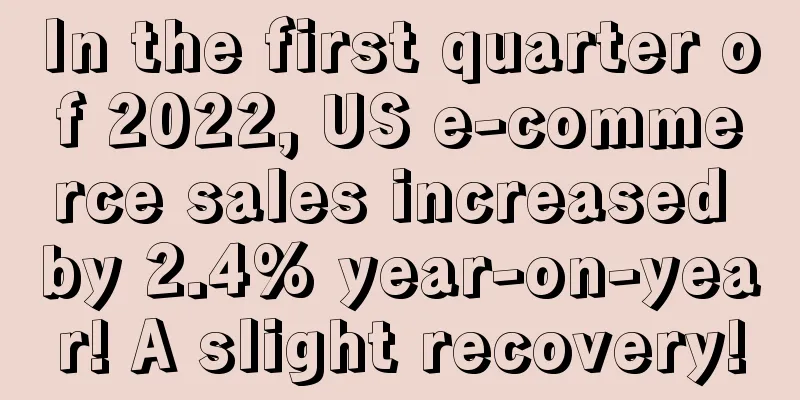Logistics competition slows down under cost pressure! Consumers are more relaxed about delivery speed

|
According to foreign media reports, the competition to provide consumers with faster delivery services is slowing down due to rising fuel costs. At the same time, consumers' requirements for delivery speed are also relaxing. In the years before the pandemic, Amazon was the leader in e-commerce delivery, with few rivals able to match its ability to meet consumer expectations for online orders to be delivered within two days. Amazon has been preparing to turn things around again and plan to restore its previous same-day delivery service levels. However, the epidemic disruption and rising costs have made Amazon a bit overwhelmed. New research shows that Amazon is unlikely to restore its delivery levels in the short term because the cost of fast delivery is getting higher and higher. Logistics costs have been rising rapidly over the past year, and the sharp rise in fuel costs has exacerbated this rise. Due to the increase in fuel surcharges, retailers' average shipping costs have increased by 10-15% compared to a month ago. Retailers are adjusting strategies to save on delivery costs, such as allowing consumers to buy online but pick up orders in stores, or increasingly using pickup points for consumers to collect orders. E-commerce giants and their logistics arms have also been hit, with their logistics and delivery costs breaking new records. For example, Amazon's costs have almost doubled from 2019 to more than $150 billion, while SF Holdings, the parent company of SF Express, warned of a loss of 1.1 billion yuan ($170.62 million) in the first quarter. According to a report, Amazon is now no longer sending back returned items, but is choosing to destroy or resell them to avoid additional costs. Even consumers are relaxing their expectations for delivery speeds: According to a recent report from UPS Capital, many prefer an estimated time of arrival, real-time tracking of packages or shipping insurance over faster delivery. The report noted that while two-day delivery has long been considered the "gold standard" for e-commerce delivery, today's consumers have new priorities, with as many as 80% preferring other benefits. That could be because supply shortages have changed consumers’ minds, making them less likely to place a premium on fast delivery, while demand for same-day delivery is also waning as concerns about inflation curb consumption. Editor ✎ Xiao Zhu/ Disclaimer: This article is copyrighted and may not be reproduced without permission. |
<<: Another move! The world's richest man Musk bids $46.5 billion to acquire Twitter!
>>: Mother's Day may cost $31.7 billion! What gifts do Americans like to give this year?
Recommend
51% of American consumers will shop online early next year! Strong demand for electronic products!
<span data-shimo-docs="[[20,"获悉,根据物流运输公司Pi...
U.S. ports handled 2.34 million TEUs in March! Total imports in the first half of the year are expected to be 13.5 million TEUs!
<span data-shimo-docs="[[20,"获悉,据外媒报道,在202...
What is sears? Sears Review
Sears is an American department store chain founde...
How long has it been since you were reunited with your parents?
It's Mid-Autumn Festival again This year Do y...
Are you always fooled by reviews? 6 tips to identify real human reviews
How to promote new products on Amazon is a questio...
The seller created his own fancy lsiting label display method!
Recently, a seller was browsing the Amazon front ...
What is Shenzhen Haotong Tiancheng International Logistics Co., Ltd.? Shenzhen Haotong Tiancheng International Logistics Co., Ltd. Review
Shenzhen Haotong Tiancheng International Logistics...
What is Catterton? Catterton Review
L Catterton (formerly L Capital) was founded in 20...
US e-commerce sales exceed one trillion! The "epidemic bonus" is not a flash in the pan
It is learned that more and more analysts and expe...
The top 10 brands most loved by American millennials in 2022 are released! Amazon ranks second and Walmart ranks fourth!
<span data-shimo-docs="[[20,"获悉,营销机构"...
What is Zhiying? Zhiying Review
Hangzhou Zhiying Technology Co., Ltd. is a service...
Walmart almost got rich by working alone
Source: Know Nothing Author: One Punch Super Dish ...
What is HitTail? HitTail Review
HitTail is an SEO tool that specializes in long-ta...
Etsy's second quarter revenue exceeds $500 million! The number of active buyers has exceeded 90 million
It is learned that Etsy recently released its seco...
Introduction to different types of Amazon accounts
1. Self-registration account and global store acco...









